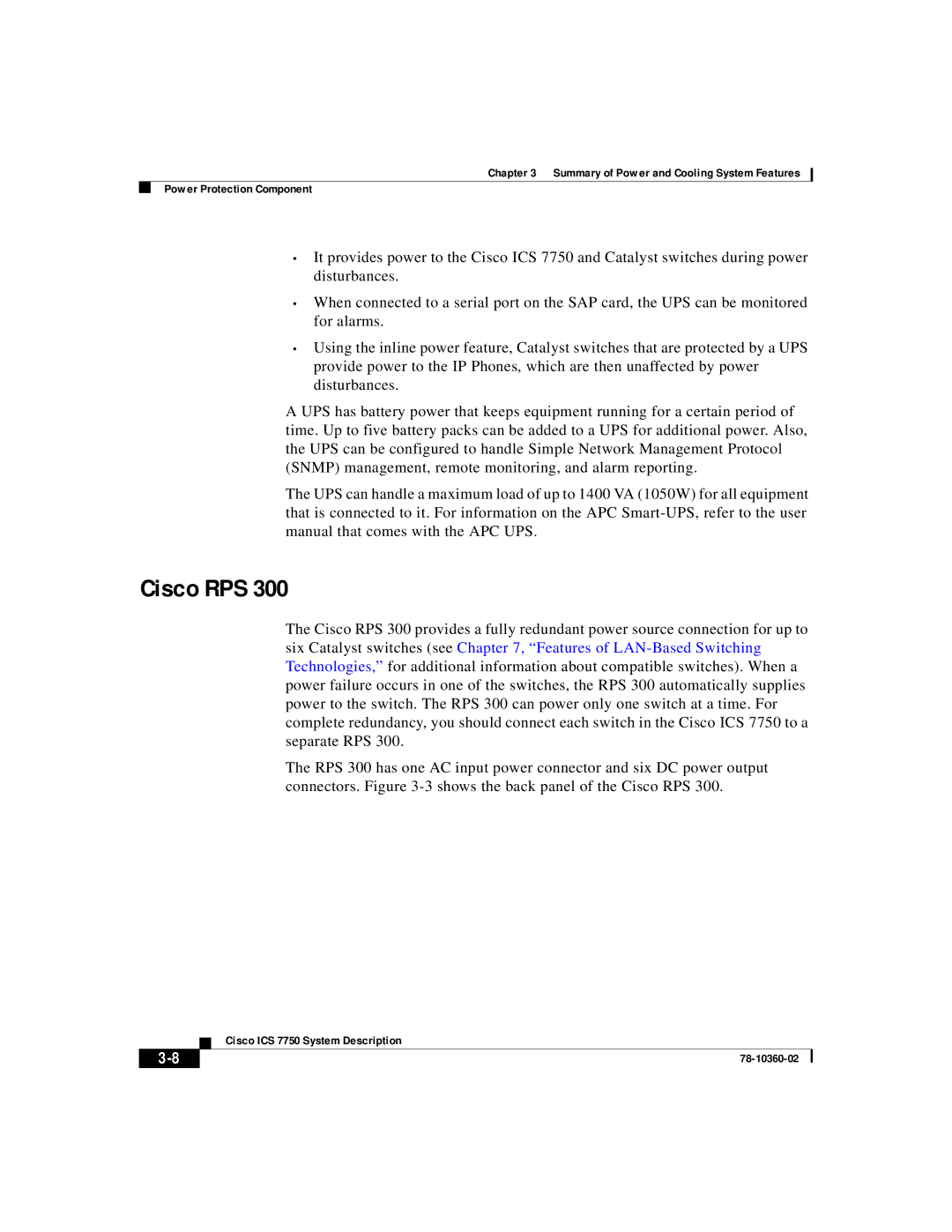
Chapter 3 Summary of Power and Cooling System Features
Power Protection Component
•It provides power to the Cisco ICS 7750 and Catalyst switches during power disturbances.
•When connected to a serial port on the SAP card, the UPS can be monitored for alarms.
•Using the inline power feature, Catalyst switches that are protected by a UPS provide power to the IP Phones, which are then unaffected by power disturbances.
A UPS has battery power that keeps equipment running for a certain period of time. Up to five battery packs can be added to a UPS for additional power. Also, the UPS can be configured to handle Simple Network Management Protocol (SNMP) management, remote monitoring, and alarm reporting.
The UPS can handle a maximum load of up to 1400 VA (1050W) for all equipment that is connected to it. For information on the APC
Cisco RPS 300
The Cisco RPS 300 provides a fully redundant power source connection for up to six Catalyst switches (see Chapter 7, “Features of
The RPS 300 has one AC input power connector and six DC power output connectors. Figure
| Cisco ICS 7750 System Description |
|
